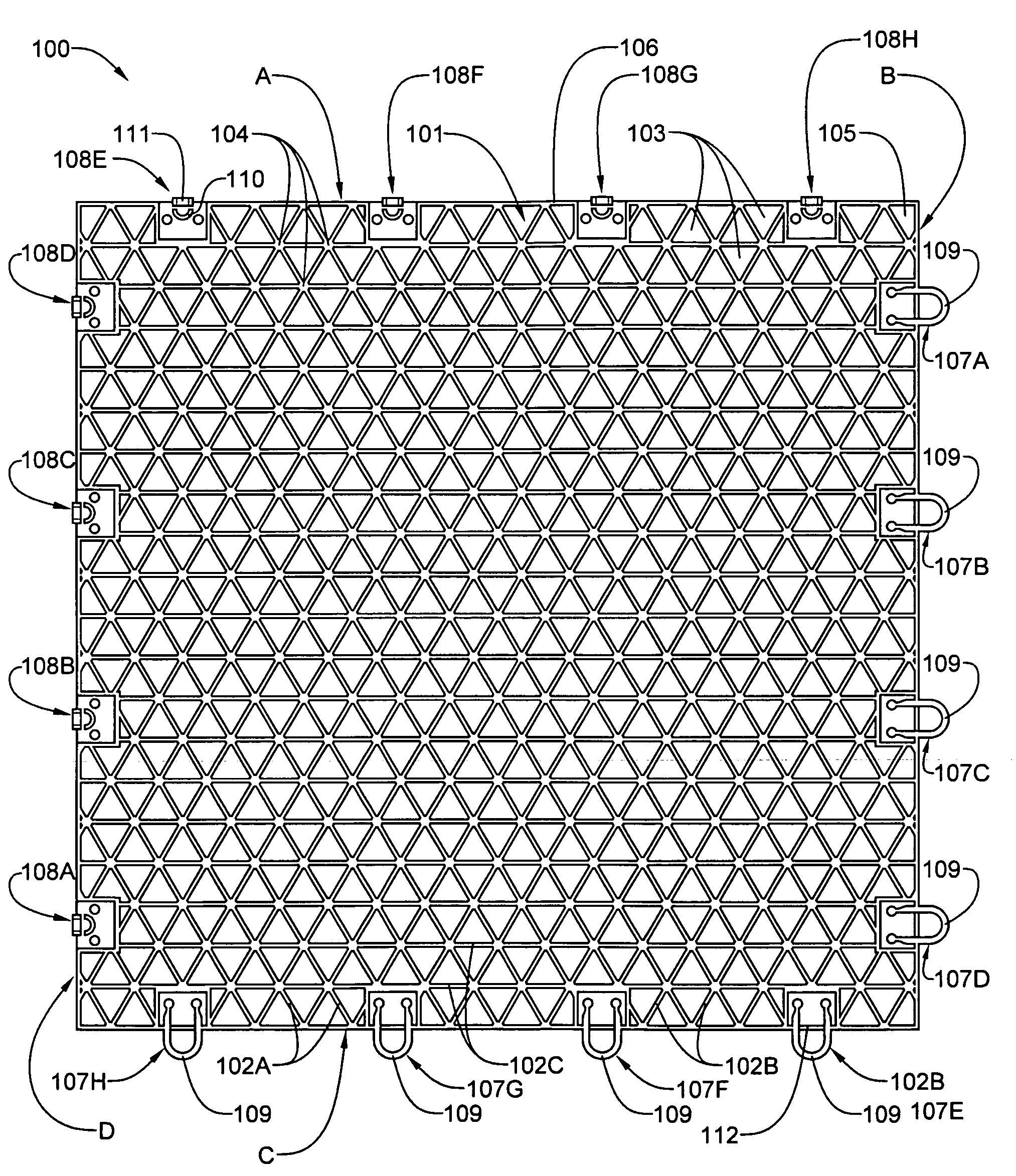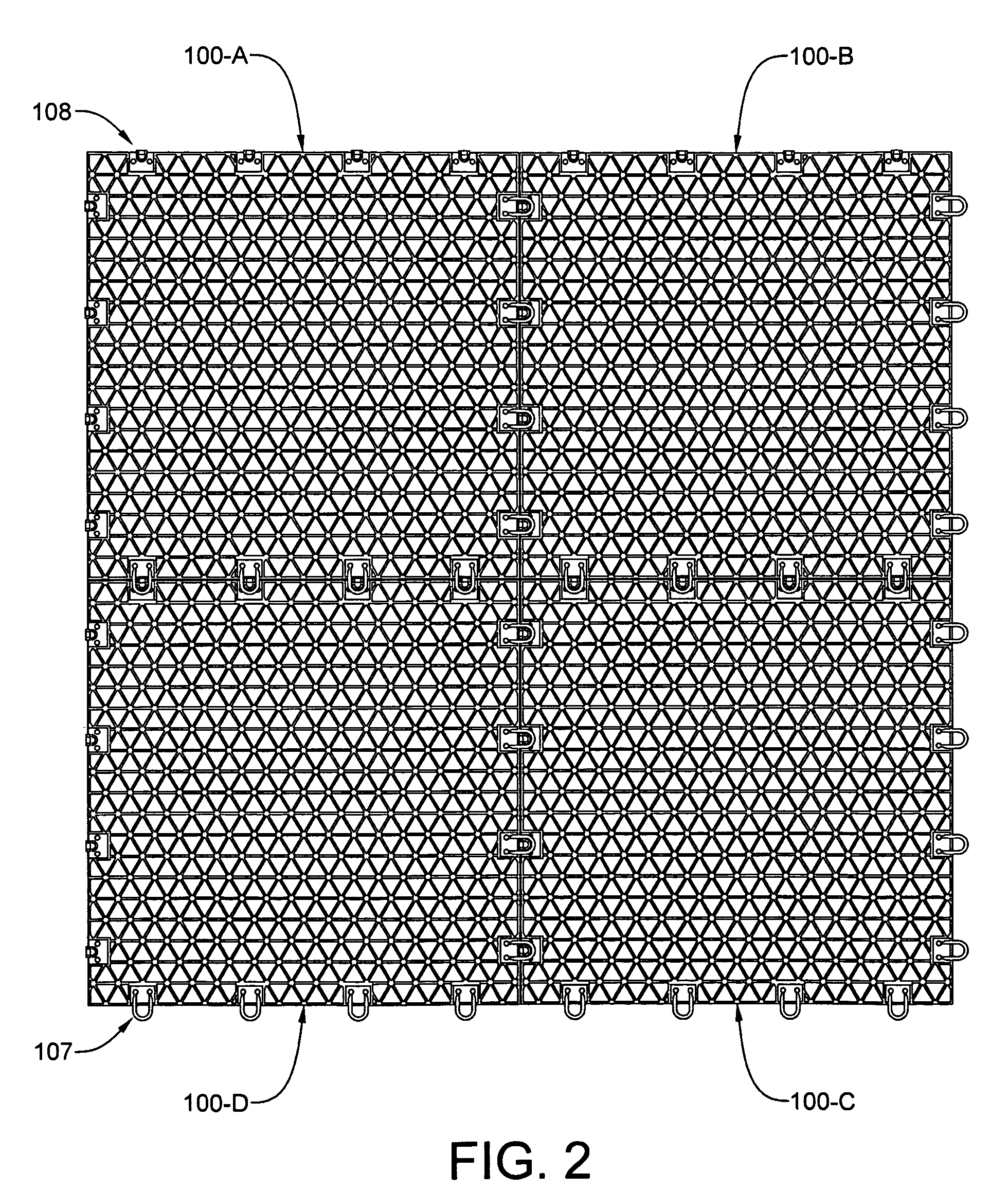Floating floor assembled from an array of interconnected subunits, each of which includes a stone, ceramic, or porcelain tile bonded to an injection molded polyolefin substrate
a technology of interconnected subunits and floating floors, applied in the field of floating floors and tile floors, can solve the problems of difficult sealing or bonding of materials with adhesives, and the difficulty of adhesive bonding to those materials
- Summary
- Abstract
- Description
- Claims
- Application Information
AI Technical Summary
Benefits of technology
Problems solved by technology
Method used
Image
Examples
Embodiment Construction
[0026]The invention will now be described with reference to the attached drawing figures. It should be understood that the drawings are not necessarily drawn to scale and are meant to be merely illustrative of the invention. The invention may be practiced using tiles of different shapes, including those having rectangular and hexagonal configurations. FIGS. 1 through 6 disclose the manufacture and assembly of tiles having a rectangular configuration. FIGS. 7 through 12 disclose the manufacture and assembly of tiles having a hexagonal configuration.
[0027]Referring now to FIG. 1, a square polymeric plastic substrate 100, fabricated in accordance with the present invention, is sized to accommodate the attachment on an upper surface thereof of a square stone, ceramic or porcelain tile. The substrate 100 is injection molded as a single piece thermoplastic material having the characteristics of exceptional toughness, stress-crack resistance, chemical resistance, and stiffness. Although th...
PUM
| Property | Measurement | Unit |
|---|---|---|
| Thickness | aaaaa | aaaaa |
| Angle | aaaaa | aaaaa |
| Weight | aaaaa | aaaaa |
Abstract
Description
Claims
Application Information
 Login to View More
Login to View More - R&D
- Intellectual Property
- Life Sciences
- Materials
- Tech Scout
- Unparalleled Data Quality
- Higher Quality Content
- 60% Fewer Hallucinations
Browse by: Latest US Patents, China's latest patents, Technical Efficacy Thesaurus, Application Domain, Technology Topic, Popular Technical Reports.
© 2025 PatSnap. All rights reserved.Legal|Privacy policy|Modern Slavery Act Transparency Statement|Sitemap|About US| Contact US: help@patsnap.com



